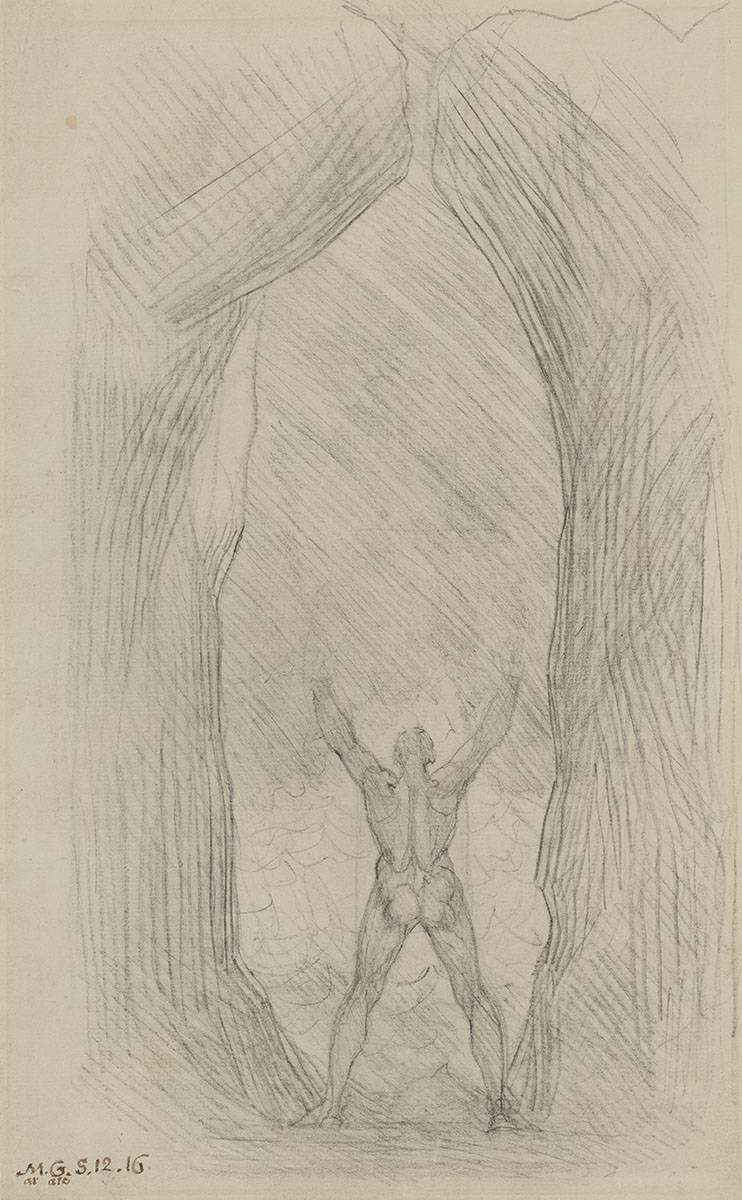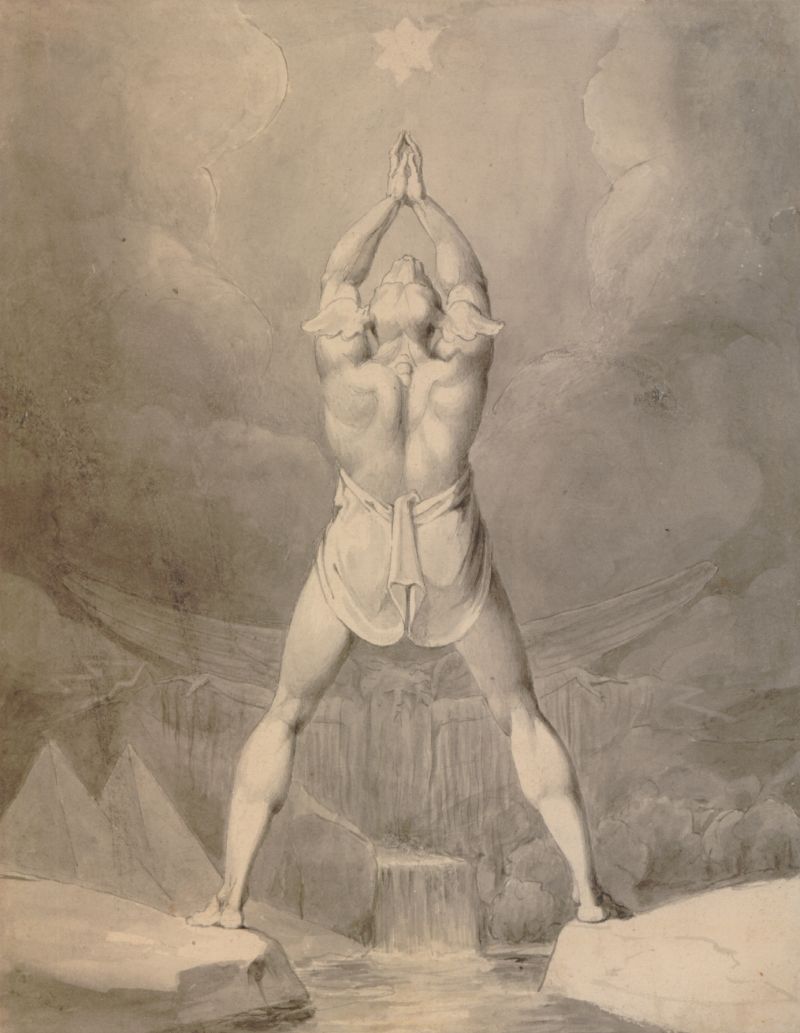This bold drawing was made by Fuseli towards the end of his life and celebrates his enduring interest in the works of John Milton. Fuseli was not only a hugely significant painter, designer and writer, he was, as Professor of Painting and from 1804 Keeper of the Royal Academy, a hugely important teacher, whose vision and ideas impacted a generation of British painters from Thomas Lawrence to William Blake. Fuseli was widely read and a polyglot, deploying the full force of his erudition in the conception of his designs. This remarkable sheet shows Satan summoning his legions from the entrance of a great cave, inscribed with initials indicating it was made at Margate Sands in December 1816, this powerful drawing is therefore a late expression of Fuseli’s enduring interest in the subject.
Fuseli was born in Zurich, he initially trained to be a Zwinglian minister, but left Switzerland after he exposed corruption by a city magistrate. Fuseli spent time in Berlin, where he was immersed in the world of the German enlightenment, before travelling to London in 1764 with the British diplomat Sir Andrew Mitchell. In London Fuseli met an influential circle of friends and future patrons and was exposed to the world of the London theatre. He described seeing Garrick perform Shakespeare as like ‘an operation for cataract’, introducing him to the power of the texts as performed. In May 1770 Fuseli arrived in Rome, having been encouraged to travel to Italy by Sir Joshua Reynolds. Rome provided Fuseli with not only a diverse circle of fellow artists, but a remarkable source book for his subsequent work as a historical painter in the form of the heroic figures of Michelangelo and late antique sculpture.
In 1791 the radical publisher Joseph Johnson, Fuseli’s closest friend and supporter, issued proposals for a magnificent edition of Milton’s complete poems supervised by William Cowper and embellished with thirty plates executed by eminent engravers such as Francesco Bartolozzi, William Sharp, Thomas Holloway and William Blake. Fuseli was to be the only painter involved. After a myriad of set-backs, Fuseli eventually showed a cycle of forty-one paintings devoted to Milton’s life and works in 1799. The whole scheme was a financial disaster and no plates were engraved to sell to subscribers. Fuseli sought to rectify this blunder with the eleven large plates retrospectively engraved by Moses Haughton after the most sublime of the Milton Gallery paintings (in particular, the Lazar House) and jointly published as ‘from the Royal Academy’ between 1803 and 1813.
The heroic figure of Satan was at the heart of Fuseli’s interest in Milton. Fuseli conceived him as Apollo-like, muscle-bound and energetic, the epitome of a fallen angel. In the present drawing Fuseli reprises the motif of showing the muscled back of Satan, legs and arms outstretched summoning his legions from some unseen void. It was a pose that Fuseli had first experimented with in Italy, making a spirited ink copy of Andrea del Sarto’s Beheading of St John the Baptist from the cloister of the Scalzo, Florence. It is a pose which appears frequently in Fuseli’s treatment of Satan, including the print Satan Summoning his Legions used to illustrate Book 1 of Paradise Lost and published in 1803, engraved by Peltro Tomkins. The motif is such a powerful one that Fuseli used it in his depiction of the God Anubis which he used as the illustration of The Fertilization of Egypt from Erasmus Darwin’s The Botanic Garden, 1791. Fuseli’s design was engraved by the young William Blake who would go on to adapt the idea – a muscle bound figure seen legs and arms apart, from behind – in his great depiction of the Great Red Dragon (Brooklyn Museum). As such this extraordinarily bold drawing, made at the end of Fuseli’s career, sits in a remarkable visual lineage and stands as one of the most dramatic of Fuseli’s conceptions of Satan.



